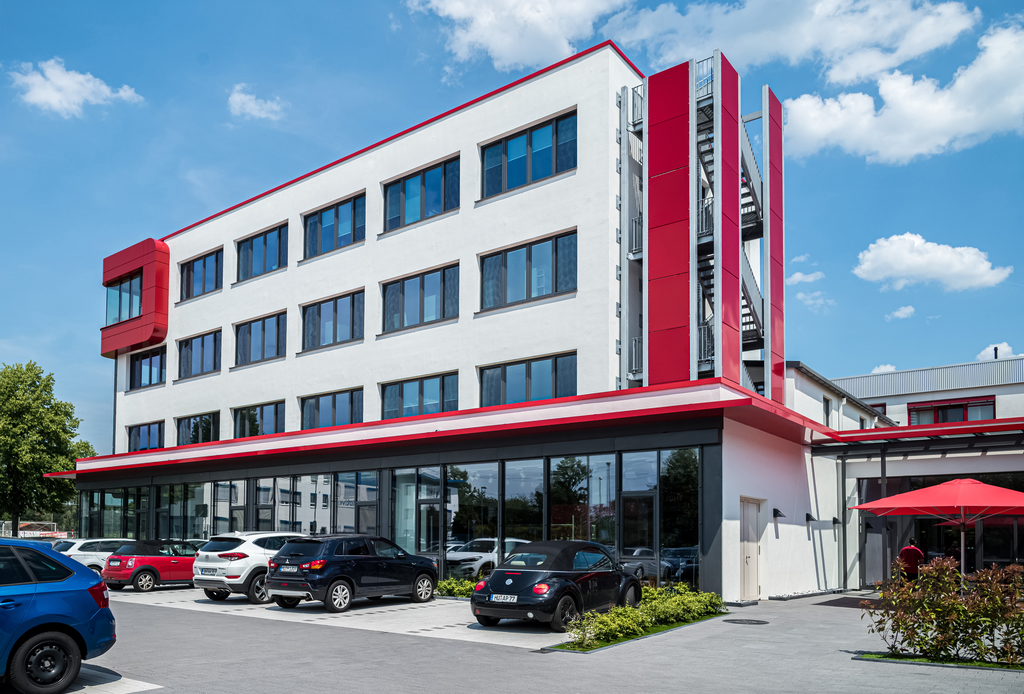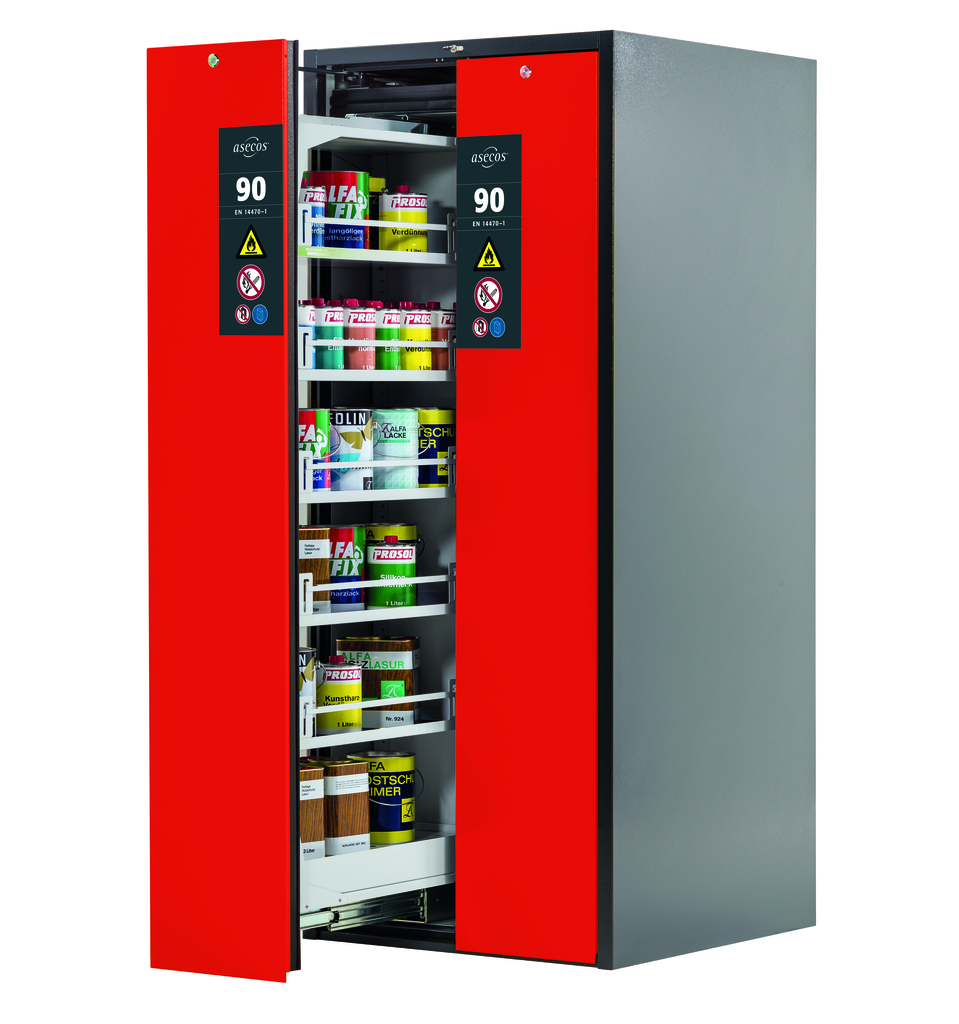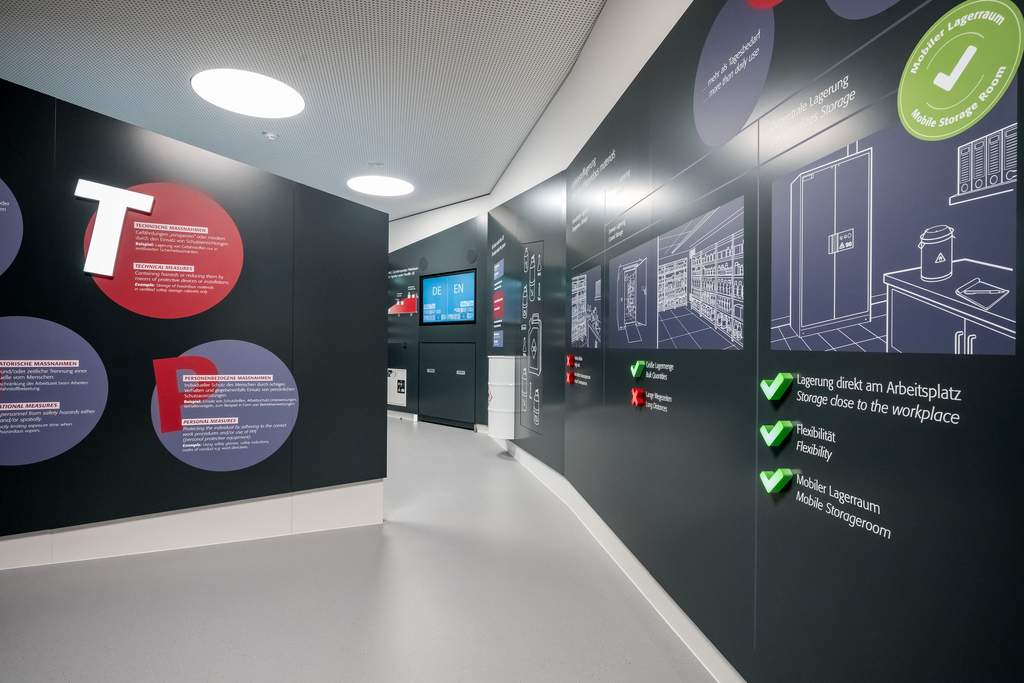
Kelly Rose
Editor

Kelly Rose
Editor
As asecos celebrates its 25-year anniversary, Mark Sennett visits their impressive newly expanded headquarters in Gründau, Germany and asks Sascha Kunkel how the company is raising awareness of the risks associated with hazardous materials and helping to create safer workplaces.
Tell me more about the origins of asecos?
It all started in 1994 with quite humble beginnings in Schöllkrippen, Bavaria. It was a small facility back then – approximately 400 square metres of production space and 120 square metres of office space.
At that time in Germany, there was an existing standard for safety storage cabinets for storing flammables but it was limited to 20 minutes, and there were restrictions on where the cabinets could be used within a building. Conversely, building regulations stipulated 90-minutes fire resistance for storage rooms and doors so there was a big discrepancy. We already had a solution for decentralised storage, but this wasn't ideal as you still had the problems of transporting the materials to and from the workplace. The asecos idea was to create a cabinet with the same safety level as these fire-resistant rooms, but almost as a mobile storeroom that you can put wherever you want without limitations. This led to us developing the first 90-minute fire resistant cabinet ever offering the best of both worlds - you have safety comparable to a central store and the flexibility of having everything close by.
Why is it important to have 90-minutes fire resistance?
The key factor isto provide a safe window of evacuation. We all have experience of workplace fire drills and it is quite common for buildings to be evacuated in 10 - 20 minutes. However, these are only drills and cannot replicate the real life conditions that occur when an incident takes place. Therefore, it is very important that this “safe window” offers the maximum time possible for evacuation. Unfortunately, not all cabinets on the market can achieve this, with many models offering less than 10 minutes’ fire resistance. Construction wise there are three types of cabinets. You have the single wall cabinet that is a single layer of sheet steel. This offers very little, if any, fire resistance and in tests, fails at around 3 minutes. The second type of construction is the double-wall steel cabinet, consisting of two layers of steel with air in between as an insulator. This was the first real standard that ever existed, starting in the 1960s and 70s in the United States, offering around 10 minutes of fire resistance. Now you might be able to evacuate a factory on ground floor in that time but for multi-floor buildings this may not be sufficient time. Finally, you have the fire resistant cabinets according to the European standard EN14470, that will give you up to 90 minutes of fire resistance. We were the first company to offer this, raising the bar significantly from 20 to 90 minutes.
The standards were changed in Germany in 1998 with the 90-minutes being adopted. In 2004, the first European standards were developed along the same lines, raising the safety levels in many countries.
What are the key features of a 90-minute cabinet?
The cabinets are built to a very high standard using fire resistant materials to achieve the required standard. In the event of a fire the drawers, where fitted, and the doors are self-closing. All gaps and door openings have intumescent seals which prevent flame penetration. All the cabinets can be connected to technical extraction systems but the ventilation openings are self-closing in the event of a fire.
There are also many practical features to the cabinets aimed at making them as user friendly as possible.
What sets asecos apart from everything else in the market?
We have the largest available range of products in the field of storing hazardous materials. Although we started out with cabinets for flammable liquids, we have since increased our portfolio immensely. There are many different hazardous materials, all with unique aspects that have to be considered – such as corrosion resistance for acids and alkalis, increased insulation for gas cylinders etc. And, of course, from a ventilation perspective these must be designed differently, which has led to a comprehensive product offering. However, I believe that the most important things that sets us apart is our asecos Academy with its unique training offering to the marketplace.
What is the asecos Academy? Can you tell us about that?
There is a real lack of awareness of the significant dangers of hazardous materials and even when people are aware of the dangers, they can become blinded to them - they might carry out a process for many years and eventually not see the danger. We wanted to show people what can go wrong and give them perspective as there are so many misconceptions about quantities of hazardous materials. It is all about providing user awareness.
To this end, we have created a series of training concepts and lectures. Our most extensive presentation lasts two hours and is a live demonstration of small experiments with hazardous materials. Small fires and small explosions to explain in an entertaining but educating way – a visual method to make it easily understandable. This presentation is often in conjunction with our roadshows, where we utilize our demo vehicle which is equipped with our products and can be taken to a customer’s site to create a true user experience. In fact, we will be taking this to the NEC for the Fire Safety Event on the 9-11 April 2020. Of course, we also offer shorter presentations explaining the storage process, cabinet choices etc. and these can be provided face to face or as webinars.
As part of the building expansion here in Gründau, we have created a state of the art showroom where we showcase all of our products and most importantly, our interactive experience, asecos World. This is a truly unique offering providing a thorough understanding of hazardous materials.
asecos World starts at the very basics and is aimed at a wide audience - we explain what hazardous materials are, how to identify them and the dangers associated with them. We talk about the importance of ventilation and exposure limits, creating that connection to their workplace. We walk them through carrying out a risk assessment properly and guide them in the right direction product wise.
Why have we done this? We don't just want to sell cabinets – we want to provide safety solutions and a proper safety storage concept. In order to do this, it is important for us to understand what the customer is doing. So we need to either visit the customer at their site to assist with the decision making or we need to educate the customer to a level that they can make that decision themselves. We want the customer to have a trained eye so they go in the right direction and adopt the highest level of safety that is available.
When was the concept of asecos World first envisaged?
We have had the idea on the table for around ten years, but some of the technology we are using to make it possible has only been around for the last few years. We also had space constraints so it has taken us some time to realize the dream. The total investment in asecos World was around half a million euros, and it is now the heart of the asecos Academy. It was first opened at our 25th anniversary party on the 15th June.
What kind of audience do you want to attract to the facility?
It is aimed at a very wide audience and ideally we want a variety of visitors. Obviously we want our dealers and distributors to experience it, but also health and safety professionals, fire professionals, the end-users themselves as well as architects and designers. The wider the spread of knowledge, the safer we can make the workplace. We have already had more than 200 visitors and anyone wanting to visit can reach out to our sales teams or our dealers and distributors.
What are the key markets that you are currently in?
As you would expect our market base is very broad as hazardous materials are everywhere. However, there are some key industries that use our products more than others. Universities, research facilities, pharmaceutical and chemical companies have completely adopted the 90-minute concept.
Are there any markets where you are under-represented?
As previously mentioned, the research and academic sector has a pretty good understanding of what they need in terms of safety and have become real champions of the standards. However, if we focus on the UK, it is the broader industrial market such as automotive, aerospace, food production and general manufacturing that we really need to penetrate. Some industries are reluctant to invest due to limited budgets. There is no doubt that they understand the importance of safety but with the minimum legal requirements in the UK, they ensure they meet these but sometimes they are not enough to mitigate the risks – so reaching out to these people is a very important call for us.
Why are you in the UK?
The UK is a particular challenge to us due to the different minimum standards that are in place there but that is the very reason why the UK is so important to us. Our UK sales team are very active in promoting asecos and raising awareness of the EN14470 standard but we are aware that some markets take longer than others to adopt new concepts.
Have you made any specifics plans for Brexit?
We have already increased stock of our best-selling products in the UK but because we offer such an array of customised solutions, it is difficult to cater for all requirements. In all honesty we don’t have major concerns as the same fire dangers will still exist after Brexit. Lead times for certain products may go up temporally, but since we are dealing in more than 90 countries worldwide, we will quickly adapt to changed import formalities.
What's next for asecos?
There are always new hazards and therefore new challenges. Our aim is to be in the driving seat, proposing solutions before accidents happen but this will equally be driven by end-user feedback. Therefore, innovation is vitally important to us as a company and our Product Management team will continue to develop new solutions as the challenges arise. This can be seen in the recent product launches of our Lithium Battery and Metal Powder cabinets.
New products lead to new market sectors so our activity in these sectors will increase accordingly.
You have to look at each market individually - what works in one, may not work in another – but having feet on the ground in the UK will ensure we stay at the forefront of hazardous material storage and handling.
Sascha Kunkel is Vice President of Global Markets at asecos. For more information on asecos or to book your place at asecos world, visit www.asecos.com




Safety And Environmental Protection
Weiherfeldsiedlung 16-18
Grundau
Germany
DE-63584
GERMANY
+49-6051 9220 785